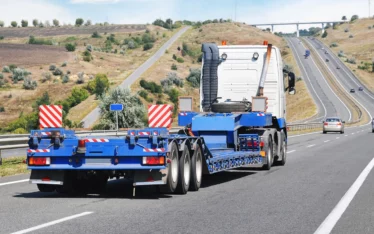Numerous factors are needed to consider when planning to implement cross-docking into an organization. From all of those factors, the types of cross-docking operations should be the main factor to consider. Every organization has its priorities regarding warehouse space, costs, product types, and geographical specifics. The process for cross-docking operation also varies from company to company as they have their approach.
What are the Types of Cross-docking Operations?
Cross-docking is a logistics procedure wherein the products from a manufacturing plant or supplier are directly distributed to a retail chain or customers with marginal to no storage and handling time. Even though cross-docking aspects are universal, there are still three different types of this operation.
Continuous Cross-docking

The first and simplest among the types of cross-docking operations is the continuous cross-docking. In this operation, the terminal has a main site where products are going and immediately transferred from one trail to another. These terminals are often designed in a line form to make the loading and unloading of items quick and straightforward.
Consolidation Cross-docking
Cross-docking services in Canada also offer a consolidation operation. Different products are being merged in a single location in this cross-docking operation and then transferred together to another site. The terminal has more space allotted for storage for different loads or products, so it is easy to unload and store items until the outbound truck arrives.
In case a large retail store has ordered many different supplies, they will merge all the supplies rather than drive several trucks for each supply. It would be a waste to drive a lot of trucks that aren’t fully loaded.
Deconsolidation Cross-Docking
Deconsolidation cross-docking is the opposite of the consolidation approach. In this situation, a large inbound truck is loaded with many different items. It usually stops at the terminal to unload all the products onto the storage space. After unloading the inbound truck, the products are individually loaded into the outbound trucks.
In deconsolidation operation, products are directly shipped to retailers or customers. The products also need to be separated because they are a part of smaller and individual orders. This cross-docking helps reduce handling, transfer, and transportation costs, among other cross-docking operations types, while customers receive their orders quicker.
How Cross-docking Operation Work?
The process for cross-docking will not suit every warehouse’s needs. Therefore it is crucial to make an informed decision as to whether cross-docking will increase the costs, productivity, and customer satisfaction for your business. Nonetheless, supply chain managers are still optimizing cross-docking systems to automate all the manual steps that already exist. Cross-docking still uses the same equipment as traditional warehousings, such as a loading dock, containers, pallets, and forklifts.
Planning
The initial step to cross-docking operations is planning. Planning involves the identification of containers with pallet exchange relationships to create groups. Related containers within a group to make clusters are also being identified. Calculation of the minimum number of doors needed in any cross-docking operation type is also included in the planning stage. Lastly, allocating the groups of docks also requires planning to achieve the least amount of pallet movements.
Objectives:
- To enable the streamlined movement of items and goods
- To utilize the limited resources efficiently such as loading docks
- To manage peak flows and dynamic changes more skillful and quick
Scheduling

Utilization of the planning outputs as input for the scheduling stage. When input changes are detected, re-scheduling the scheduling tool will create a more convenient schedule.
Objectives:
- To adapt to the changes in real-time effectively
- To manage customs delays such as late container or truck arrivals without adversely compromising the efficiency
Documentation of Cross-docking Operations
Lastly, the process for cross-docking operations involves the documentation of master cross-docking scenarios and other related assumptions. Incorporation of task assignments, techniques, location and distance norms, and resource specifications are also included in the entire process.
Objectives:
- To maximize the whole process
- To streamline the operations
- To avoid bottlenecks by ensuring the availability of correct resources
Benefits of Cross-docking Operations to Supply Chain

Overall, there are several advantages of cross-docking into your retail supply chain. Since products are spending less time in the warehouse, inventory handling and storage costs are significantly reduced due to cross-docking. Below are some of the benefits of cross-docking.
- It significantly reduced labour costs since there is no packaging and storing.
- Transportation has fuller loads for each trip, which lessens the transportation costs while being more eco-friendly.
- Pick-location and order picking process is eliminated.
- One of the best advantages of cross-docking is that it reduces material handling and storing products in the warehouse.
- Cross-docking terminals are less expensive to build than an average warehouse.
- Products destined for a similar endpoint is transported in a full truckload, which reduces the overall distribution costs.
- High turnover of products as everything moves quickly with the use of different types of cross-docking operation terminal. Products usually spend less than 24 hours here.
- Products are transferred more rapidly through a cross-dock. It also becomes easier to screen a product’s quality.
Final Thoughts
Even though there are many benefits, operational advantages, and financial results when using different types of cross-docking operations, companies should still need to ensure proper compliance, auditing, and tracking upon implementing cross-docking.
It’s also essential to control all shipments and have proper visibility in implementing cross-docking services in Canada so that you and your team can work efficiently.
If you are looking for a cross-docking service provider, feel free to visit OCTi. You may call us at 905-695-1501 to get a free quote today.




